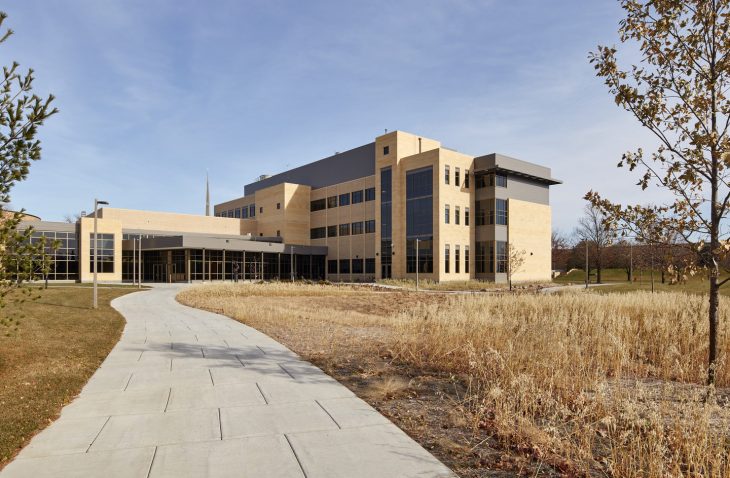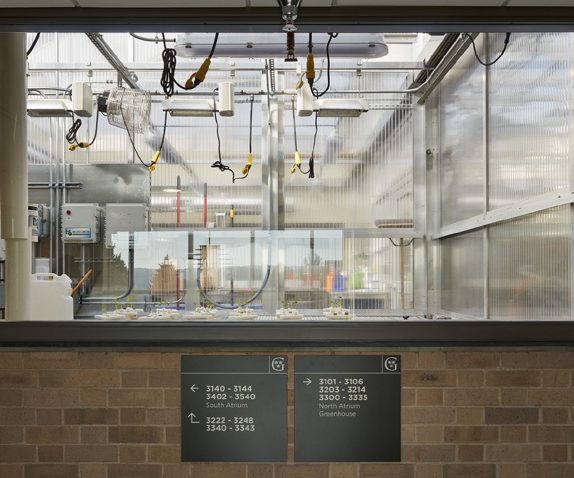Addition and Renovation
IMEG provided engineering and design services for Gustavus Adolphus College’s expansion and renovation of the iconic, 50-year old Nobel Hall of Science. The $70 million project combined multiple spaces into one complex, housing the departments of biology, chemistry, geography, and geology, along with interdisciplinary programs in biochemistry/molecular biology and environmental studies.
The project scope included a 90,935-sf renovation of existing space and a 91,893-sf addition. The new complex houses offices, classrooms, meeting rooms, auditorium, study areas and additional teaching and research laboratories, including wet and dry labs, and a vivarium or animal lab. The renovated Nobel Hall has collaboration and conference spaces of various sizes and configurations, increased support areas, chemical storage, and hazardous material handling.
The building design incorporates an enclosed bridge to connect the natural sciences in Nobel Hall with the physical sciences in Olin Hall. A new lecture auditorium and black box stage connects the sciences with performing arts. Within the renovated performing arts a black box theater, green room, theater shop, loading dock, laundry with dye vat and storage spaces are included. A CFD model of the theater was used to provide a block model of occupied space in order to design the most efficient air distribution and to maximize comfort and minimize system capacity.
As a part of the project, the campus energy management system was upgraded with head end for web controls and upgraded chiller plant controls. 1,000 tons of cooling was added to the campus district cooling system.
Project challenges included space limitations to remodel the building, as well as consultants and owners located in different states. IMEG worked closely with contractors during BIM modeling to make sure the architects and owner’s intent were carried through construction. Since consultants and owners were spread across multiple states, BIM360 was used to work on live models and multiple user group meetings were held on site.
The facility is 20% more energy efficient than comparable buildings. Sustainable and renewable features include:
- Variable lab controls based on user occupancy and scheduling
- Air-to-air heat exchangers
- Air-to-water heat exchanger
- Low-use water fixtures
- LED lighting with occupancy and daylight controls
- High-efficiency condensing boiler with low-water temp system used in spring/summer/fall for reheat










